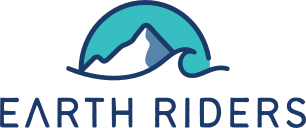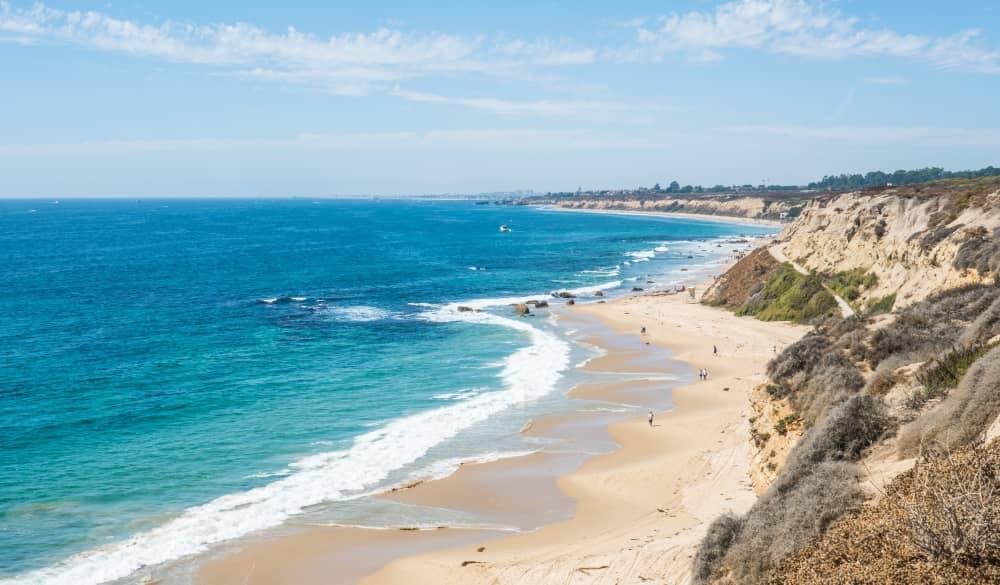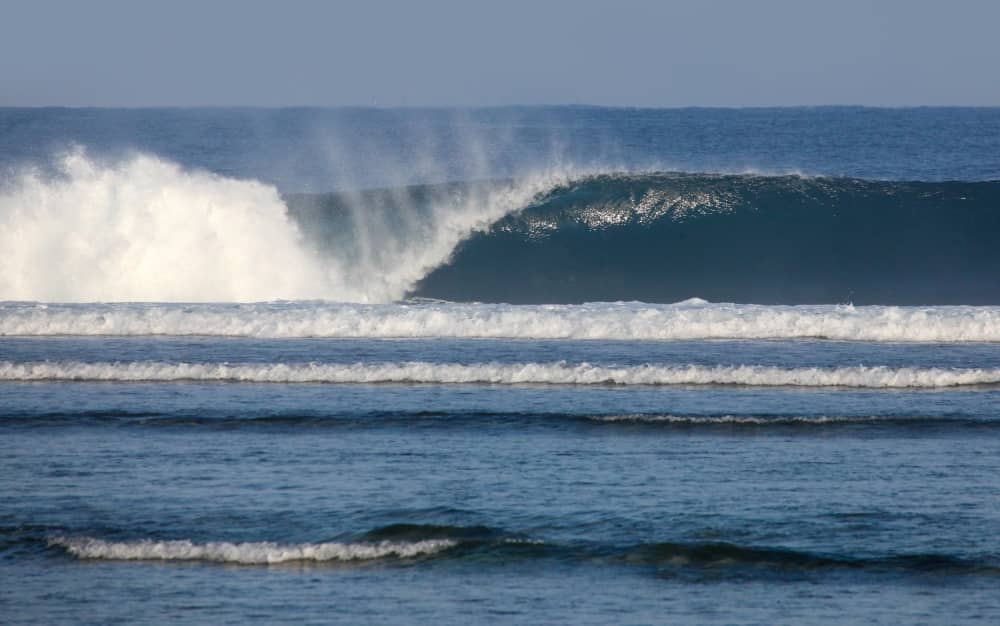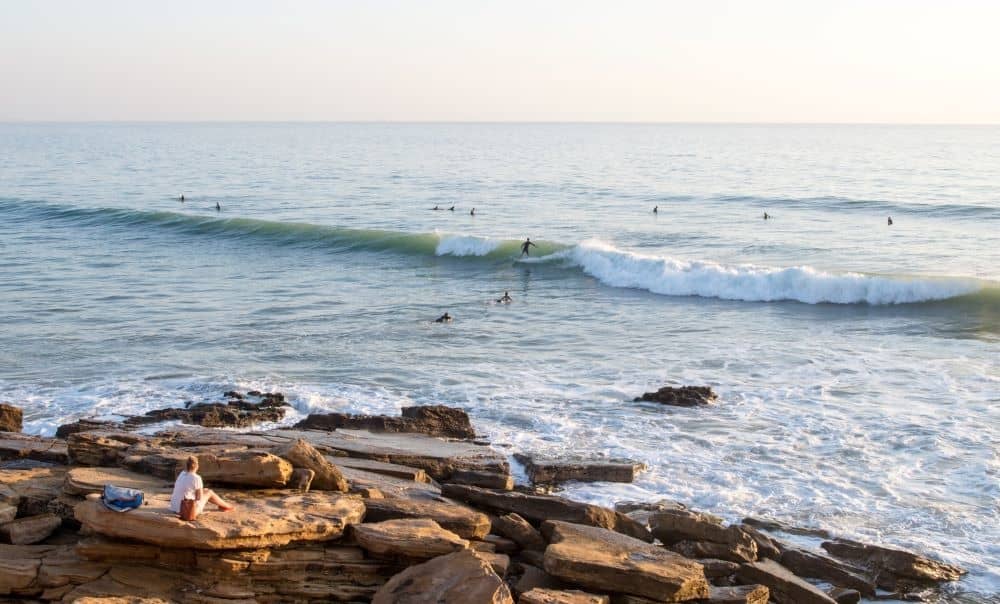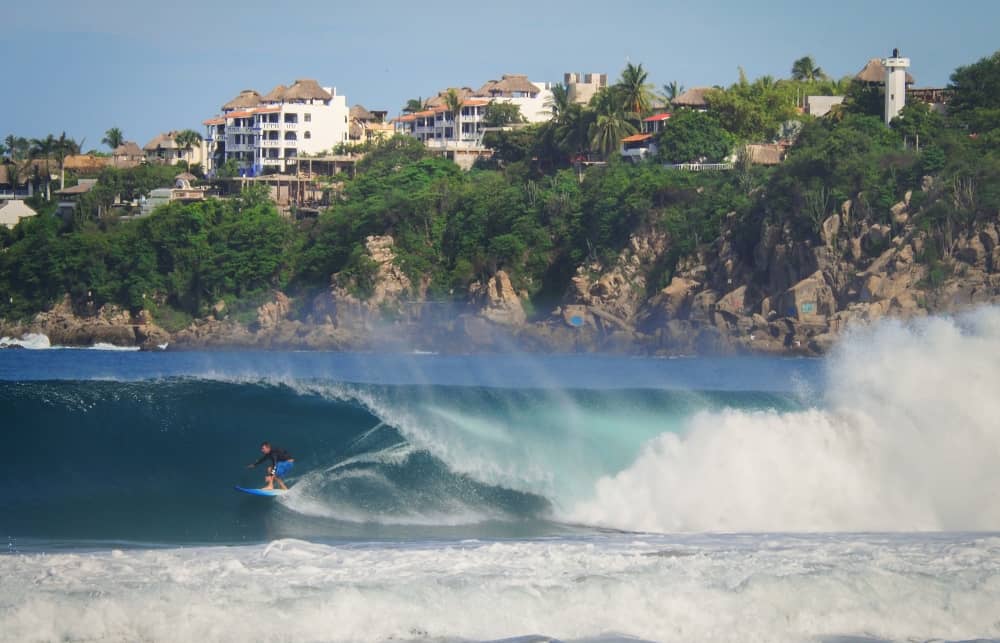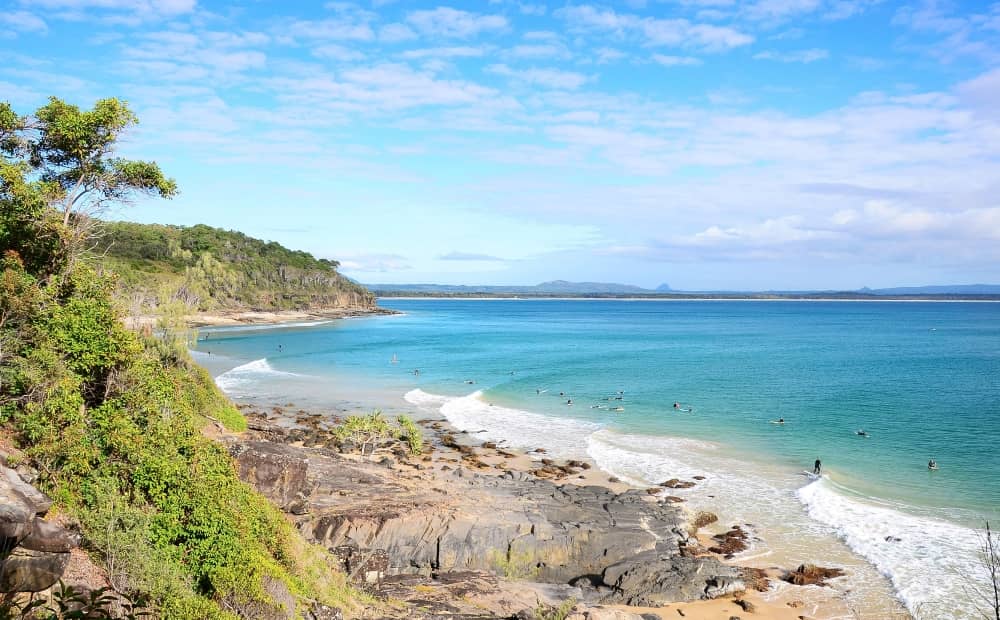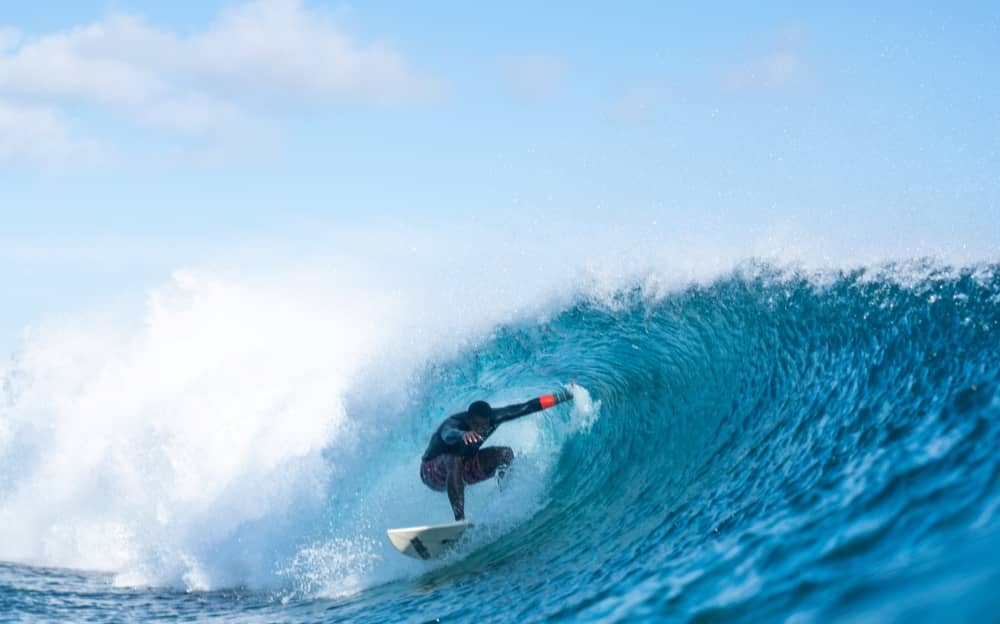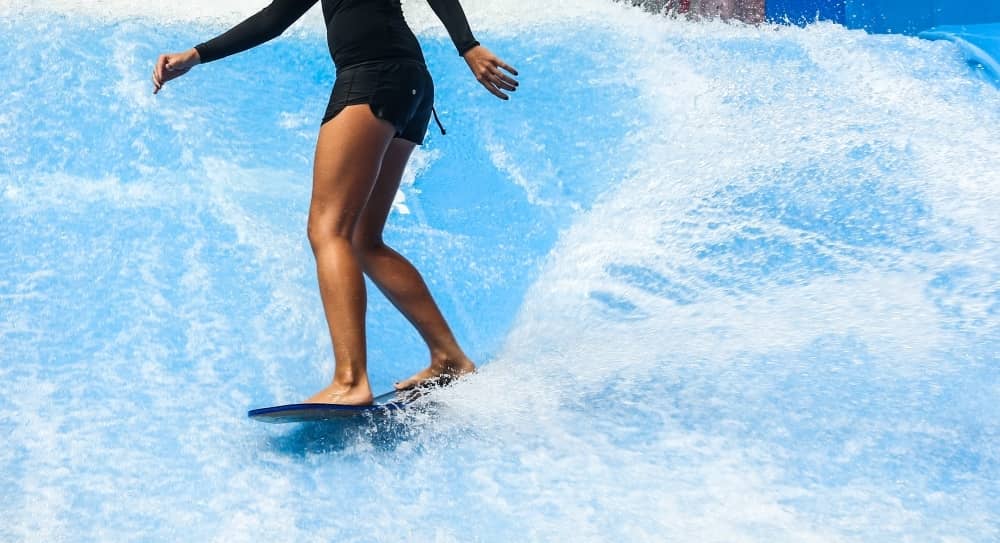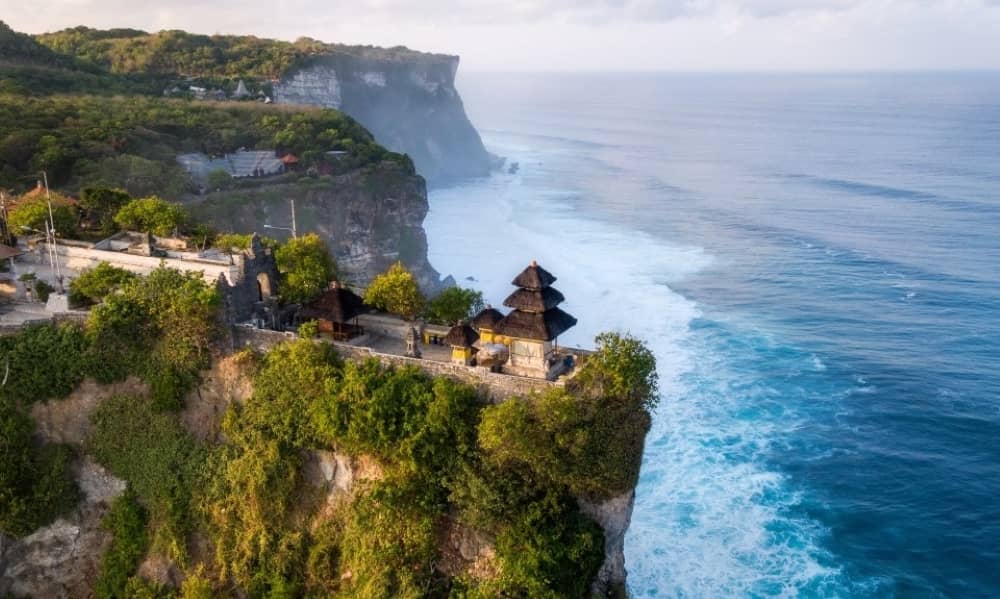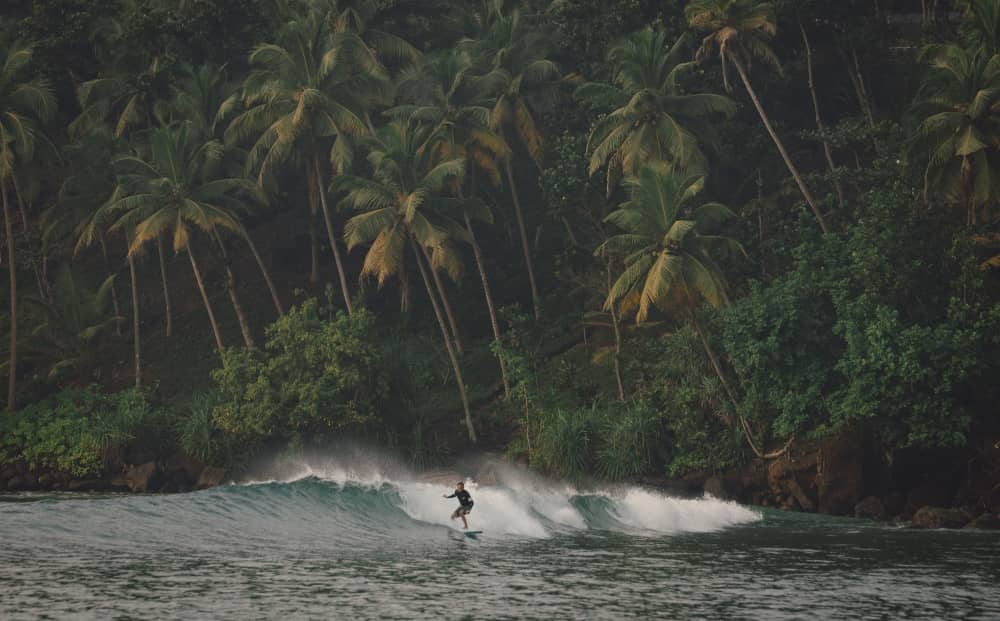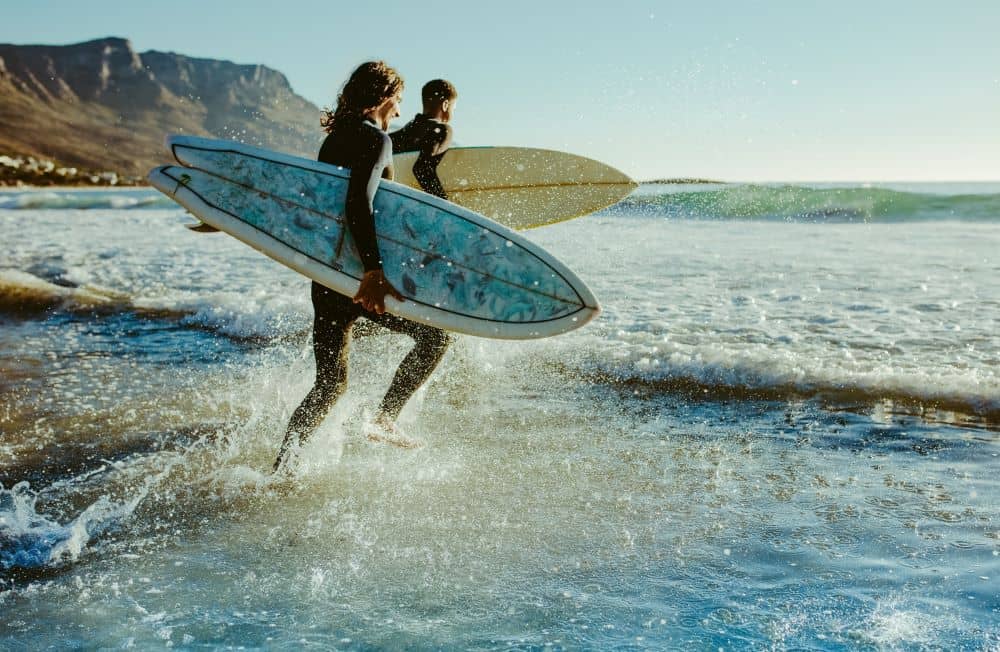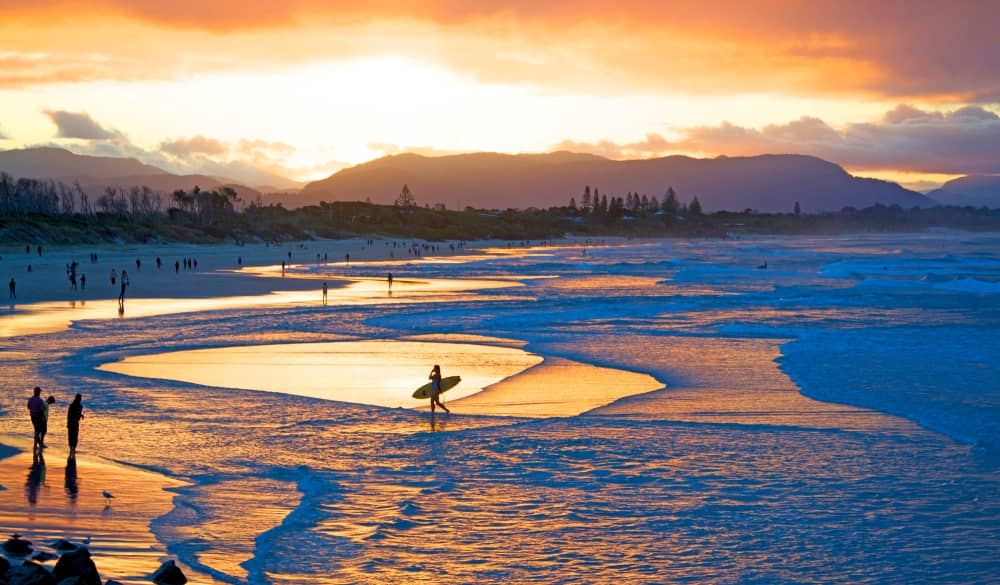
20 of the Best Surf Towns in the World
It depends on what it is you are looking for when wanting to explore. Through research across all levels of surfers across the globe, it has been found that these are 20 of the greatest Surf breaks known or still waiting to be discovered.
Whether a spectator of the sport or a frother at the top of your game, you need to tick these off the list. Come along, let’s go chase some waves!
1. Newport Beach – California
Location: Found in-between Huntington Beach and Laguna Beach on the Southern Coast of America in sunny California.
Getting There: The closest airport to Newport Beach is the John Wayne Airport under 10 kilometres away. Otherwise fly into Los Angeles International Airport (LAX) and drive 45 minutes South.
Perks: Newport Beach in Southern California is known for its large, boat-filled harbour that runs right through the middle of it. Find yourself walking out to the end of the 2 piers that extend off the coast for beautiful ocean views, Newport Beach Pier and Balboa Pier. Whilst in Newport you should head to the Balboa Fun Zone and Amusement Park and jump on the Ferris Wheel for more amazing views. Big wave surfers are attracted to the area for the extreme barrel shore break known as The Wedge. Newport Beach isn’t shy of beach breaks for beginner and longboard surfers either. Find many spots up and down the long stretch of beach, in particular an area near Blackie’s By the Sea located just North of the Newport Beach Pier is considered one of the best spots.
Season: Visit Newport in the Summer between June – August when the swell is coming from the South, and it has offshore winds.
2. Sumbawa – Indonesia
Location: An island of Indonesia situated between Lombok and Flores and part of the West Nusa Tenggara Province. It is located north-west of Sumba Island.
Getting There: Flights into Sumbawa are only available to citizens of Indonesia. For tourists, you will need to fly to Lombok and then travel across to the Island by ferry.
Perks: One of the best places in the world for surfing, diving and traditional culture. Despite the more awkward travel to Sumbawa, once here you won’t want to leave. Known for its waves, beautiful coral reefs, white sandy beaches and wild terrain. Getting around on the island is easily done by motorbike/scooter or following old traditions, horse and cart options are also available. Other traditions still seen in Sumbawa today include events such as water buffalo racing and Berempuk a ritual boxing match. There are two main surf spots found on the East and West coast of the island, the most famous being Lakey Peak. On both coasts, you will find world-class waves for our advanced surfers and a nice variety of waves to suit other levels too.
Season: Consistent long, heavy barrels are best during June and July. Waves for beginners and intermediate are best on the West coast during January, February, March and December.
3. Uluwatu – Indonesia
Location: Found in the southwestern region of the Bukit Peninsula on the Indonesian island, of Bali.
Getting There: Fly into the Ngurah Rai International Airport in Denpasar and then jump in a Grab taxi and drive 13kms south.
Perks: Find yourself climbing up and down the cliffs of Uluwatu, where you will be surrounded by the most famous waves in Bali. This area offers an unbelievable range of surf breaks all working with different swells and tides. Along with a beautiful coastline, Uluwatu is home to one of Bali’s most iconic Hindu temples located at the top of a cliff reaching 70 metres above the waves. When in Uluwatu make sure to keep your eyes peeled for the local monkey that inhabits the area. Eat some local food at a Warung or find your way to Single Fin bar and restaurant for a night out with friends or to sit on the cliffs and watch some world-class surfing.
Season: Padang and Uluwatu are best for advanced surfers from April to October.
4. Secret – Sumatra
Location: On the Western coast of Lampung the most Southern region of Sumatra.
Getting There: Fly into Medan, Kuala Namu International Airport or fly to Malaysia, Singapore or Jakarta and catch a ferry across to the island.
Perks: Sumatra is home to waves to cater for all skill sets; mellow point breaks for the logs or beginners, hollow beachies, fun beachies, short wedgy peaks, hollow points and slabs for the extreme pros. Krui is the spot where you will find all the fun waves enjoyed by beginner to intermediate surfers, a beautiful beach surrounded by green goodness, then further down a break known as ‘Sumatran Pipe’ for the more advanced. Otherwise, South Sumatra is home to and most known for the perfect right-hander break named ‘The Peak’. For the non-surfers, find yourself soaking up the sun laying on the beautiful clean beaches away from the masses, getting a massage, snorkelling with the fish or eating with the locals.
Season: The best time of year for waves in Sumatra is between June and July.
5. Tahiti – French Polynesia
Location: Located in the South Pacific Ocean, Tahiti is the main island of French Polynesia.
Getting There: Flying from San Francisco or Los Angeles is the most common as they offer the most variety of flight options. Whilst most airlines in America will fly direct to Tahiti, some are more frequent than others.
Perks: In the shape of figure 8, Tahiti is the largest island of French Polynesia and is divided into two parts; Tahiti Nui, the larger western section and Tahiti Iti, the eastern peninsula. The beautiful island is made up of black sand beaches, lagoons and waterfalls galore, two extinct volcanoes and some of the world’s best waves. Tahiti has its name on the world surf map for the big wave break known as Teahupo’o. The island has two other popular surf breaks Paparã which include beachfront golf and Mãhina iconic for its lighthouse, kitesurfing, hiking and mountainous surroundings.
Season: May to August, the dry season is the best time of year to visit Tahiti.
6.Nazaré – Portugal
Location: Oeste region, Western coast of Portugal, North of Lisbon.
Getting There: Fly into Lisbon Airport and head North on a bus or drive for 1 hour and 45 minutes.
Perks: Surfing in Nazaré when the proper swells hit is not for the faint-hearted. Nazaré is a destination for big wave surfers and surfer Garrett McNamara is currently holding the World Record for the biggest wave surfed at 100ft. The place is iconic for images of the red lighthouse with a platform full of people spectating, overlooking the beach with huge rolling waves coming into shore behind it. Praia do Norte is where you will find these massive waves, whilst there are other beaches surrounding where you will also find great yet friendlier smaller waves.
Season: Big wave season in Nazaré is during Winter between October and March.
7. Skeleton Bay – West Africa
Location: Skeleton Coast, Namibia, South-West Africa.
Getting There: Fly into Walvis Bay International Airport in Namibia and then drive about 7 hours through the Skeleton Coast National Park.
Perks: Considered to be the longest sand-bottomed left-hand point break in the world. Skeleton Bay hasn’t been on the world surf map for long, as it was discovered properly in 2008 via a ‘Google Earth Challenge’. Although now many surfers travel from across the globe in the hope to catch the longest riding wave to get barrel after barrel. The beachie has been known to get up to 6 barrels on one wave. The beach is surrounded by a desert landscape, dry heat through the days and extremely cold at night.
Season: Find consistent clean waves in Skeleton Bay through Winter, specifically in June.
8. Taghazout – Morocco
Location: Southern Atlantic Coast, North of Agadir in North West Africa
Getting There: Fly into Agadir and then drive North for 40 minutes or fly into Marrakesh and jump on a bus or private transfer for 3 hour drive.
Perks: Love a right-hand surf break, and find yourself travelling to Taghazout across the many surf beaches of Morocco. Found on the Atlantic Coast is this small fishing town known for its waves. Stay at a surf house and find yourself partying, practising yoga or drinking mint tea with other travellers on the rooftop under the stars watching the warm African sunsets. Taghazout isn’t known for its club or bar scene as drinking on the streets is illegal, but you could find yourself visiting the many markets also known as Souks, or day trips to Paradise Valley and Bahia Palace for some history.
Season: Travel to Taghazout between October and April for chase waves as there are hardly any on offer between May to August.
9. Mentawai Islands – West Sumatra
Location: Chain of Islands in the West Sumatra Province, Indonesia
Getting There: Fly into Padang, Sumatra’s Western coast and jump on a fast ferry across to the Islands.
Perks: The Mentawai Islands is considered to be the holy grail in the surfing world as it is made up of a surf break next to surf break aimed at the intermediate and advanced level surfers. Most of the breaks on offer will require access by boat, which can easily be hired on the islands. Surfers of the intermediate level find themselves having fun at breaks called Nipussi, Macaroni’s or Four Bobs, known for the mellow reef breaks that roll into channels and work like fun beachies. Advanced surfers in the Mentawai islands will have a ball here if you love a left-hander, whilst the Ments still offers impeccable right-hand breaks too such as Rifles, Lances Right, Bobs, Hideaways and many more.
Season: From March to October is the best season to visit the Ments in particular months June and July.
10. North Shore – Hawaii
Location: Northern Oahu, Hawaii
Getting There: Only 30 minutes drive North up the coast from the Honolulu International Airport. Get there via car rental, bus services or private transfers.
Perks: North Shore Hawaii beaches are very likely the most famous in the world. Beautiful crystal-clear waters and white sand that stretches for more than 11 kilometres. Surrounded by beautiful green mountains, the beaches of the North Shore cater for surfers of all levels. Whilst most breaks are iconic for hosting competitions for the elite, such as the Triple Crown of Surfing, The Eddie at Waimea Bay and Pipe Masters, other breaks you’ll find are suitable for beginners.
Season: For all surfers, the best time to visit North Shore Hawaii is from September to February.
11. Jeffreys Bay – South Africa
Location: Eastern Cape province of South Africa
Getting There: Travel internationally into Cape Town and then drive 7.5hrs along the coast or fly to Port Elizabeth and drive 1hr to get to Jeffreys Bay.
Perks: Known as J-Bay, this thriving right-hand point break is most famous for being a host of one of the WSL competition stops. J-Bay’s perfect point break for those of the advanced level also holds fun beach breaks for beginner and intermediate surfers. Through its paradise-like vibe, this beautiful stretch of beach found in South Africa is home to an abundance of wildlife, nature reserves and many thriving surf cafes, bars and restaurants.
Season: For all surfers, the best months are between March and October.
12. Puerto Escondido – Mexico
Location: Oaxaca State, Southern Mexico, Pacific Coast
Getting There: Jump on a plane to travel to Mexico City. From here you have the scenic option of travelling by bus for 15 hours + directly South and then East along the coast. Alternatively, you can fly from Mexico City to Puerto Escondido Airport located a few hours out of town.
Perks: Oaxaca is drenched with art, history, culture, and colourful architecture. The longest stretch of beach found in Puerto Escondido is home to ‘The Mexican Pipeline’ aka Playa Zicatela, a surf break owning its fame to highly accomplished big wave surfers. For those chasing the beginner and intermediate levels, make your way to Playa Carrizalillo, two coves up the coast from Playa Zicatela. Find yourself at a beautiful, protected beach break known for its mellow waves.
Season: The best time of year for all surfers to visit Puerto Escondido is between April and September.
13. Margaret River – Western Australia
Location: South West Region, Western Australia.
Getting There: Fly internationally into Perth Airport located only 20 minutes out of Perth City, then jump in a car and drive only 3 hours South to get to Margaret River.
Perks: Another stop of the WSL tour; Margaret River is home to some of the best waves in Australia. From beach breaks, reefs, and point breaks, to slabs, catering for all levels of surfers, all year round. Margaret River is made up of many beautiful long stretches of beach surrounded by green rolling hills. Find yourself wine tasting at one of the many wineries, beach hopping, shopping for local artisans, visiting caves or hiking the Cape to Cape Trail when in Margaret River.
Season: Find waves all year round in Margaret River, although the best time of year to visit is between March to May.
14. Kalbarri – West Australia
Location: North West of Australia
Getting There: Fly into Perth then jump in a car (preferably a 4×4) and drive north for 6 to 6.5 hours. Pitch a tent or hire an Airbnb in town.
Perks: The isolated town of Kalbarri known for its red dirt surroundings has many incredible features. For the non-surfers find yourself visiting the Murchison River, the second-longest river in Western Australia. Choose from either hiring a Canoe or viewing the wonderful landmark by visiting the multiple lookout options including ‘Nature’s Window’. Kalbarri surf royalty finds Jakes Point a challenging break right off the rocks, handling waves up to 20 feet. It’s a left-hand point break that offers barrels on the takeoff and long rippable walls down the line.
Red bluff is another big Left-hand point break that has wide barrelling sections at certain times of the year. A bit further down the coast is a small spot called Lucky Bay, hosting a beachy beak with 4×4 access and amazing ‘A-frame sand banks. Down the long stretch of beach find yourself parking up for the day or setting up behind the dunes to camp for the night.
Season: The best time to go is the West Aussie winter June to August with better winds from the East making it offshore, with very decent swells that create solid powerful surf.
15. Byron Bay – New South Wales
Location: Coastal town found in the Northern part of the Eastern state, New South Wales, Australia.
Getting There: Fly locally into the Ballina Byron Gateway Airport, a 30-minute drive out of Byron Bay central. International travellers fly into Brisbane and drive just under 2 hours South of Gold Coast Airport located about a 1-hour drive North of Byron.
Perks: Once a quiet coastal town, Byron Bay is now an attraction to many across the globe. Even if you aren’t chasing waves, Byron is known to many for its unique fashion, lifestyle, art and music scene. Byron is host to the famous Splendour In The Grass Music Festival, a busy time for the small town held annually over a weekend in July. Byron Bay is home to a wide range of waves suitable to all levels of surfers. As the most Easterly point of mainland Australia, Byron Bay offers a variety of surf beaches including Belongil, Wategos, The Wreck, Main Beach, Clarkes, The Pass, Tallows and Broken Head.
Season: The best time of year to visit Byron for surf is between June and August.
16. Noosa Heads – Queensland
Location: On the North East coast of Australia, a suburb in the South of Noosa, Queensland.
Getting There: The closest international airport to Noosa is located half an hour drive south called Sunshine Coast Airport.
Perks: Surrounded by a beautiful green landscape with crystal clear waters, Noosa is a must-see holiday destination. Most of Noosa is surrounded by National Parks, protecting wildlife such as Koalas living in the Eucalyptus trees. Noosa Heads is host to some of the most perfect point breaks in the world, a longboard surfers’ dream location with long peeling waves. The coast that runs alongside the Noosa National Park is about 4km long reaching North Sunshine Beach to the headland at the Noosa River Mouth. This stretch of beach offers long mellow waves appealing to surfers at a beginner level. The Noosa ‘Points’ are aimed at people looking to ride the nose or short boarders wanting to practice their turns. Consistently breaking from the same rocky point with the same speed and line, the Noosa ‘Points’ include the following: First Point, Little Cove, Boiling Point, Tea Tree Bay and Granite Bay.
Season: Visit Noosa in the Australian summer and Autumn from mid-December through to April.
17. Raglan – New Zealand
Location: Waikato Region, North Island, New Zealand.
Getting There: International travellers fly into Auckland Airport and then either get a connecting flight, bus or train to Hamilton. Hamilton to Raglan is then only a 30-minute drive.
Perks: Known for its highly rated left-hand point breaks that can range up to 8ft. Raglan has two beach breaks at the beautiful Ngarunui Beach, perfect for those at beginner or intermediate levels. Find entertainment between the surf sessions with activities like sky diving, white water rafting, and rock climbing or find yourself in heaven tasting all the local organic foods produced in the area.
Season: For all levels visit Raglan between December and April.
18. Hossegor – France
Location: Landes, South West France
Getting There: Hossegor is located 25km North of Biarritz. You can fly into Biarritz and then drive through the countryside for 36 minutes. The easy option is to jump into a Taxi or a cheap option when pre-booked is to hire a car and experience the country like the locals.
Perks: Gain insight into why Hossegor is up there with one of the most famous surf towns in the world. The small town on the coast of France is lucky to get to host the Quicksilver Pro WSL competition, attracting many people from across the globe. For a beach that stretches for miles and miles, Hossegor can accommodate surfers from beginner and intermediate to extreme hollow barrel waves for top-tier professionals. This long stretch of beach also includes a mix of restaurants, bars and cafes right on the beachfront, creating a fun vibe for eating and drinking whilst watching some incredible surfing.
Season: June to September is best for beginners to intermediate level and September to November for Advanced surfers
Surf Camps
19. Torquay – Victoria
Location: The Great Ocean Road, South East Coast, Victoria, Australia
Getting There: Closest airports to Torquay are the Tullamarine and the Avalon Airport both located in Melbourne and from here it is just over an hour’s drive down the coast to Torquay.
Perks: Be immersed right into the heart of the Australian surf culture when in Torquay, famous for the big swell that hits Bells Beach. A busy time of year for the small coastal town when the Ripcurl Pro Competition event is held here, bringing famous surfers from across the globe. Torquay is also famous for being the birthplace of iconic surf brands Rip Curl and Quicksilver, still extremely famous within the industry to this day. Not only is Torquay a great place to visit the cliff-surrounded beaches in the hot weather, but it also offers culture through its surf museums, beautiful views along the Surf Coast Walk or snorkelling around Point Danger Marine Sanctuary to see some diverse sea life.
Season: Visit Torquay in the following months when the weather is best; March, April, October, November and December.
20. Cloudbreak – Fiji
Location: Just under 5kms off the Southern coast of Namotu Island, one of the many islands that make up Fiji.
Getting There: Fly into Nadi located on Viti Levu, the main island of Fiji. You will then need to make your way 45 minutes south to Marriott Momi Bay where you can jump on a long boat to travel across to Namotu Island.
Perks: Rated one of the best and most challenging waves in the world, Cloudbreak has made a strong name for itself amongst the elitists of surfers. You will see big wave surfers like Koa Rothman, Billy Kemper and Nathan Florence charging the left-hander wave of Cloudbreak. Days with a South-South Easterly wind and a South-South Westerly swell are prime conditions for the famous reef break. The consistent waves are visible from up to 3kms away reaching up to 20 foot plus in height and will break on most tides. As the waves get smaller you will still see them barrel where they then pick up speed and gets shallower across the live coral reef. A break is definitely for advanced and beginner surfers to spectate from the sidelines.
Season: April to October is the best time for waves at Cloudbreak considering the Southern Hemisphere storms and offshore winds. Although you can find this spot to be consistently breaking across the whole year.
